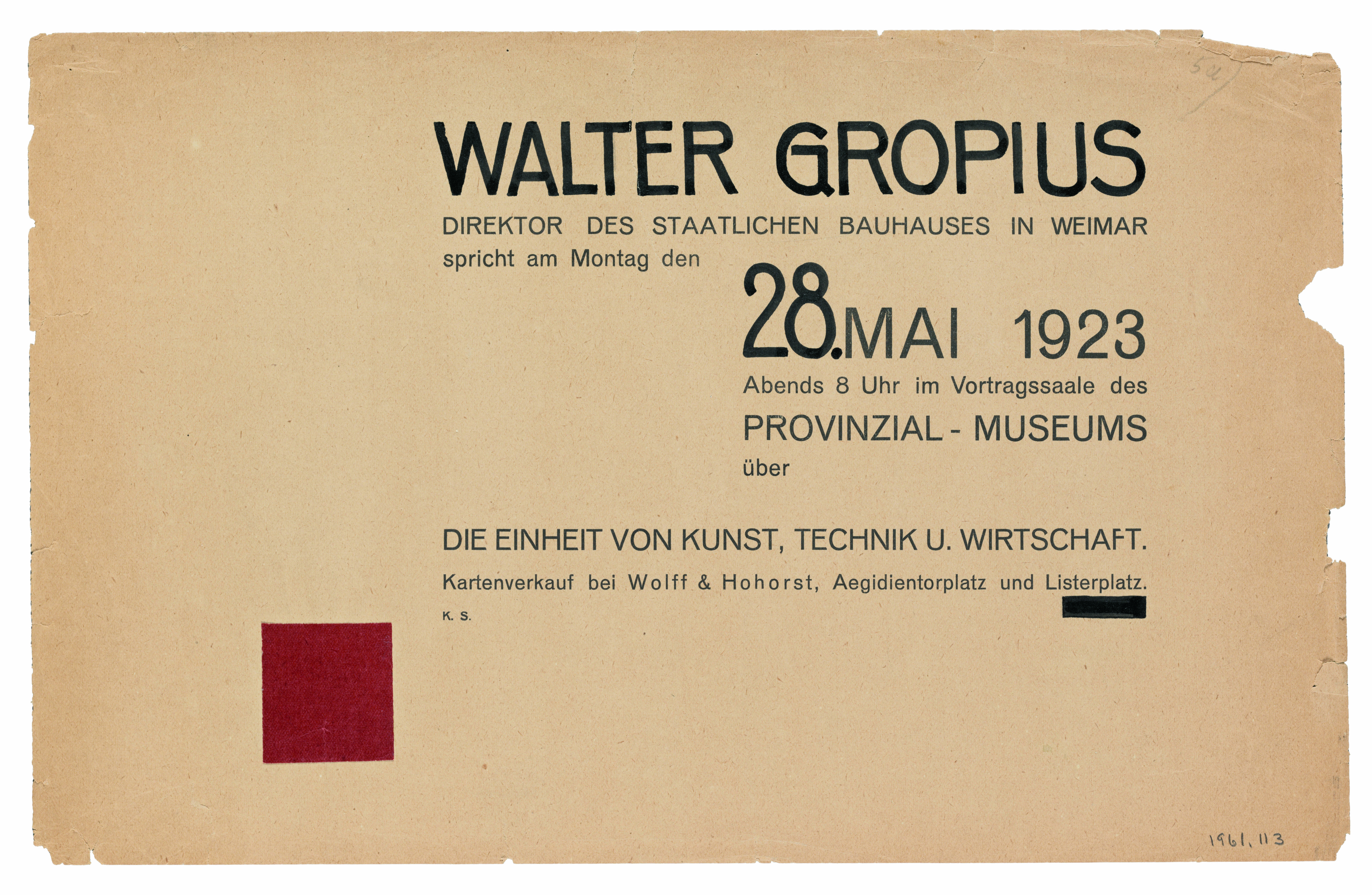
The artists who sustained Walter Gropius
From Joan Miró to Henry Moore, Robert Motherwell to Wassily Kandinsky, great artists helped the Bauhaus founder on his way to greatness
Few did more to promote the clean lines and sharp right angles of the modern world than the architect and Bauhaus founder, Walter Gropius. It shouldn’t come as a massive surprise, then, to find, in the opening pages of our new illustrated biography, Walter Gropius: An Illustrated Life, a photo of the young man himself, holding up a prop to square off his own features for the camera. However, this device is no set square or draughtsman's tool, but instead a heavily ornamented picture frame.
As authors, Leyla Daybelge and Magnus Englund explain, this photo was taken in 1907 during one of Gropius’s earliest forays into the working world. The young student travelled to Spain with his friend Helmuth Grisebach, where “he and Grisebach decided to try their hands at art dealing,” the authors explain. “They sought out Old Master paintings in Madrid’s antiquarian shops (including what they mistakenly thought was a Murillo) to sell back in Germany.”
He may not have lucked out at the antiques market, but Gropius did retain a deep love of the visual arts, and his career was sustained by many supportive painters, photographers and sculptors. The book’s authors praise the founder of the Bauhaus for his genius, which, they write, “lay in assembling a world-class teaching faculty of artists, including Wassily Kandinsky, Paul Klee, László Moholy-Nagy, Lyonel Feininger and Oskar Schlemmer.”

Kurt Schwitters, poster for lecture by Walter Gropius, 'Die Einheit von Kunst, Technik und Wirtschaft' (The Unity of Art, Technology and Economy) lecture, 1923
That seminal school closed in 1933, following the rise of the Hitler, but Gropius retained his ability to associate himself with supportive artists following his relocation to Hampstead in North London.
“Hampstead, with its well-established community of artists, provided the perfect cultural microclimate for Gropius,” explains the book. “Henry Moore, Barbara Hepworth, Ben Nicholson and the critic and editor of the Burlington Magazine, Herbert Read, with whom he established a special rapport, lived in [residential artists’ community] Mall Studios close to [Gropius’s London home ] Lawn Road. As the Nazis tightened their grip on Europe, a growing wave of German and Austrian refugees arrived in this hilly, bohemian area of North London, including Oskar Kokoschka,Piet Mondrian, John Heartfield and Naum Gabo.”
Emigrating once more in 1937, this time to the US, Gropius took a teaching position at Harvard and continued to collaborate with world-renowned artists, most notably in his work on the Harvard Graduate Center.
This sizeable campus development, “included dormitories for 600 students as well as common rooms, a dining hall and a community centre,” says the book. “It spread over seven buildings linked by covered walkways. There were textiles by Anni Albers and artworks by Josef Albers, Herbert Bayer, Joan Miró and Hans Arp – although Arp complained bitterly when he visited and saw that his large, red, wood relief Constellations II was placed in the dining hall with tables right up against it so that the students knocked their lunch trays into it. The relief was moved to a safer position, higher up the wall.”
No such problems lay in the John Fitzgerald Kennedy Federal Building in Boston. Commissioned in 1961 and completed three years after JFK's death, in 1966, “Gropius commissioned a mural by Robert Motherwell and large sculptures by Dimitri Hadzi and Herbert Ferber.”
Having fled Germany, Gropius ended his career at the heart of the American establishment, thanks, in part, to the support of some of the greatest artists of the 20th century.

To see many of the places mentioned here and to better understand this truly seminal figure, order a copy of Walter Gropius: An Illustrated Life here.